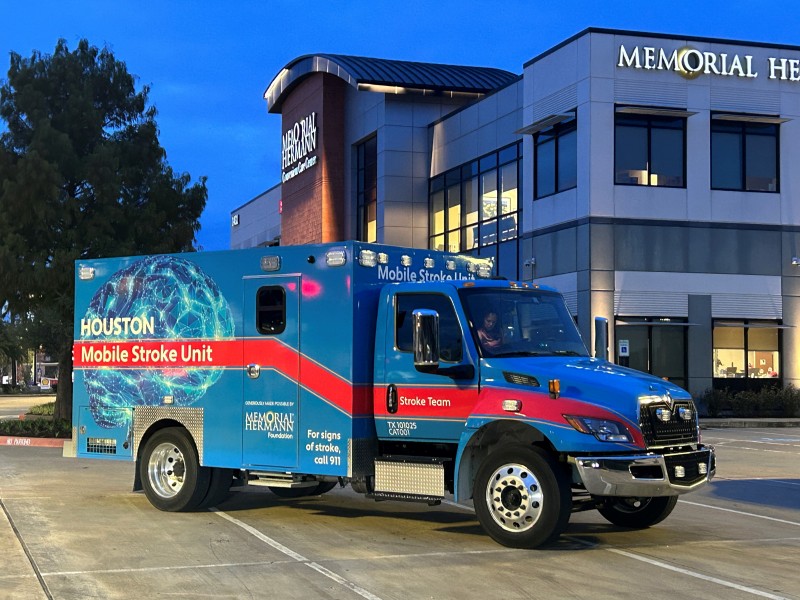Nation’s First Mobile Stroke Unit Gets Updated Imaging and Treatment Capabilities
Images

Houston’s Mobile Stroke Unit (MSU), the first specialized ambulance for pre-hospital stroke treatment in the United States, has a new look and updated imaging and treatment capabilities thanks to philanthropic support from the Memorial Hermann Foundation.
Introduced in 2014, under the direction of James Grotta, MD, a neurologist and the director of stroke research for the Clinical Institute for Research and Innovation at Memorial Hermann-Texas Medical Center, the MSU brings an entire stroke treatment team to the patient at the site of the emergency. It has a new computed tomography (CT) scanner that allows team members to identify the type of stroke, as well as updated equipment for performing blood tests and administering the clot-busting drug used to treat ischemic strokes.
“By identifying strokes faster and starting treatment sooner, the MSU saves precious minutes when a stroke patient is losing nearly half a million brain cells per second,” said Dr Grotta. “It’s a tremendous benefit to the community, backed by nearly 10 years of research.”
For the past decade, the MSU team operated a research trial comparing clinical outcomes in patients eligible for a clot-busting drug who received MSU care as compared with standard care by emergency medical services (EMS). They learned that patients who were evaluated, imaged and treated by the MSU team and then transported via MSU to the emergency room had better outcomes:
- 20% more patients received treatment,
- Those patients who were treated received the clot-busting drug 40 minutes faster, and
- 10 times more patients were treated within the first critical hour compared to standard management
This early intervention almost doubled the odds of the patients being discharged directly to home after their stroke. Additionally, patients treated on the MSU had less long-term disability, such as paralysis and inability to speak, reducing overall health care costs.
“One of the questions we explore when investing philanthropy dollars is, ‘Does the initiative accelerate or enhance services that have been proven to positively impact patient care?’” said Anne Neeson, executive vice president and CEO of the Memorial Hermann Foundation. “With the MSU, the numbers speak for themselves. It’s a lifesaving resource and one our donors and board are honored to support.”
Today, the MSU has established itself as the standard of care for stroke treatment in Houston. When someone is suspected of having a stroke – at home, at the gym, at work, etc. – the Houston Fire Department dispatches the MSU to the patient’s location. Once on scene, the team, which includes a critical care nurse, CT technology specialist and paramedic, assesses the patient and works together with a stroke neurologist to determine the treatment plan. If treatment is needed, the team begins the process onsite before transporting the patient to the nearest hospital.
“On average, the MSU is treating one to two patients each day, with more than 1,500 patients treated since we launched the service – and that’s just in the city of Houston,” added Dr Grotta. “Our long-term goal is to expand the program to include surrounding EMS agencies, and eventually to add more units to serve more patients.”
Members of the MSU team instrumental in planning that expansion, as well as managing operations, include the leaders at Memorial Hermann Life Flight. The air ambulance service holds the Texas Department of State Health Services license for operation of the MSU as a specialty ambulance. Life Flight also manages all educational aspects related to the MSU, from new hire and continuing education training for the nurses and paramedics who staff the MSU to Emergency Vehicle Operator Course training.
“Both Life Flight and the Mobile Stroke Unit bring high-level critical care services from the hospital to the patient, so the collaboration is a natural fit,” said David Meyer, MD, medical director of Memorial Hermann Life Flight and the Mobile Stroke Unit.